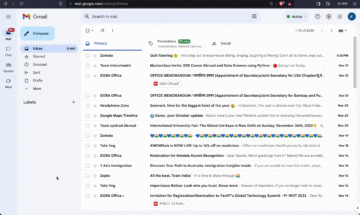
What is electronic file management
When images and information from paper documents are captured, processed and stored digitally, it is referred to as electronic file management. It is the process of storing data in an electronic filing system, replacing physical storage (paper, folders, cabinets etc.).
Why upgrade to electronic file management
By upgrading to an electronic file management system, companies can:
1. Share and access data from a central database – Computerized filing allows for information to be stored in a digital format, that employees can easily search for and access. Moreover, the documents can also be accessed remotely on the cloud from a computer, tablet or mobile device.
2. Effortlessly convert paper documents to electronic files – Information in paper documents can be easily captured and converted into electronic files by using technologies such as: document imaging, robotic process automation (RPA) and optical character recognition (OCR).
3. Secure confidential information – Paper documents can easily get lost or damaged due. This can be detrimental to the company, especially if the document contains sensitive information. By upgrading to electronic filing, confidential information remains safe and secure. Additionally, companies can choose who has access to certain documents within the computerized filing system.
4. Back up and destroy files – To ensure uninterrupted flow of business activities, computerized filing systems automatically backup files, which can be beneficial if a document becomes corrupted, Additionally, electronic filing also makes it easy to destroy documents that are no longer needed. Employees don’t need to spend hours/days shredding/destroying outdated confidential documents.
When upgrading to an electronic filing system, ensure that the technology allows for:
- easy searching in the document and the company’s ERP system.
- automatic capturing and processing of new files created in the ERP
- the ability to access and process documents on computers, tablets and mobiles.
- the creation of customized workflows for each type of file
Benefits of electronic file management system
Cost Saving – Paper copies require filing cabinets and storage spaces. Companies can save money spent on purchasing filing cabinets and external storage spaces with electronic filing of documents. Also, regular office expenses such as printers, ink, photocopiers, paper etc. can be greatly reduced with a computerized filing system.
Reduce data entry errors – Using data capturing technology, information from documents can be accurately converted into digital files. This not only saves time but saves money that gets spent due to data entry errors.
Saves time – Employee efficiency and productivity can be improved by eliminating the need to spend endless hours searching through files for information. With the click of a few buttons, an employee can easily find the information needed within a computerized filing system.
Improve customer service – When information can be accessed easily with the touch of a few buttons, the response time to customer queries can be reduced, thereby increasing customer satisfaction.
Conclusion
Companies looking to switch to automated document processes must first implement an electronic file management system. Companies can enhance content management processes with the use of an enterprise information platform (EIP), which includes electronic file management. An EIP improves electronic document workflows with not only version control and e-signature functions, but also:
- Enables access of information from a central platform
- Captures and stores information from documents
- Allows access to multiple users simultaneously with up-to-date information
- Enables users to search for information
Source: https://nanonets.com/blog/electronic-file-management/
- access
- activities
- Automated
- Automation
- Backup
- business
- character recognition
- Cloud
- Companies
- company
- computers
- content
- Customer satisfaction
- data
- destroy
- digital
- documents
- efficiency
- employees
- Enterprise
- etc
- expenses
- First
- flow
- format
- HTTPS
- Imaging
- information
- IT
- management
- Mobile
- mobile device
- money
- OCR
- Paper
- physical
- platform
- Process Automation
- productivity
- response
- Robotic Process Automation
- rpa
- safe
- Search
- Share
- spend
- storage
- stores
- Switch
- system
- Systems
- Tablet
- Technologies
- Technology
- time
- touch
- users
- version control
- WHO
- within












